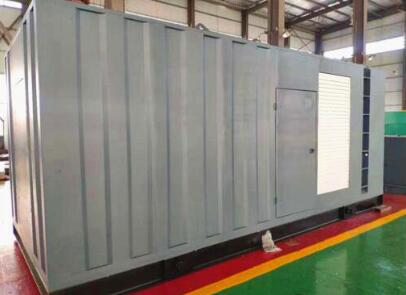Container gensets, short for generator sets, are crucial power generation systems used in various industries to provide electricity in remote or temporary locations. These gensets are enclosed within a container for ease of transportation, installation, and protection from environmental factors. Understanding how a container genset works involves delving into its components and the processes that enable it to generate power reliably.
Engine Power Generation
At the heart of every container genset is an internal combustion engine, typically fueled by diesel or natural gas. This engine is responsible for converting chemical energy from the fuel into mechanical energy through combustion. The mechanical energy generated by the engine is then transferred to the alternator.
Alternator and Electrical Generation
The alternator, also known as a generator, plays a crucial role in transforming the mechanical energy from the engine into electrical energy. It consists of a rotor and a stator. As the rotor spins within the stator due to the mechanical energy provided by the engine, it induces an electromagnetic field. This process generates alternating current (AC) electricity. To make the electricity usable for various applications, the genset includes additional components for voltage regulation and control.
Voltage Regulation and Control
Container gensets are equipped with voltage regulators to ensure a stable and consistent supply of electricity. These regulators monitor the output voltage and make adjustments to maintain it within a specified range. Maintaining a stable voltage is critical to prevent damage to connected equipment and ensure the safe and reliable operation of electrical devices powered by the genset.
Fuel System and Efficiency
Efficient fuel management is essential for the reliable operation of a container genset. The fuel system includes components such as fuel tanks, filters, and injectors. The fuel is delivered to the engine in precise amounts to optimize combustion and maximize fuel efficiency. Proper maintenance of the fuel system is crucial to prevent issues like clogging and ensure a continuous and reliable power supply.
Cooling System for Engine
The internal combustion engine generates a significant amount of heat during operation. To prevent overheating and maintain optimal performance, container gensets are equipped with cooling systems. These systems typically use radiators and fans to dissipate heat generated by the engine. Regular monitoring and maintenance of the cooling system are vital to prevent the engine from overheating and ensure its longevity.
Control Panel and Monitoring
Container gensets come with control panels that allow operators to monitor and manage the generator's functions. The control panel provides information on key parameters such as voltage, current, and frequency. It also includes controls for starting, stopping, and adjusting the generator's settings. Regular monitoring and prompt response to any issues indicated on the control panel are essential for preventing downtime and ensuring uninterrupted power supply.
Conclusion
In conclusion, a container genset is a versatile and efficient power generation solution that relies on the seamless integration of its various components. From the internal combustion engine to the alternator, voltage regulators, fuel systems, cooling systems, and control panels, each element plays a vital role in ensuring the reliable generation and distribution of electricity. Understanding how these components work together is crucial for the proper operation and maintenance of container gensets.
For further information on container gensets or to inquire about a reliable supplier, please don't hesitate to contact us. Our experienced team is ready to assist you in finding the right container genset solution for your specific needs.

Comments
Post a Comment